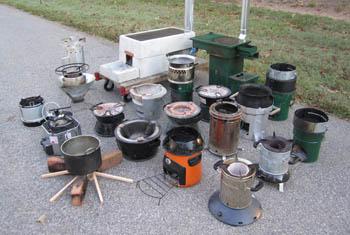Clean Cookstove Research

Problem
According to the World Health Organization, cookstove smoke is a major contributor to indoor air pollution in developing countries causing approximately 4 million premature deaths annually and a wide range of illnesses.
Nearly half of the people in the world still depend on the burning of biomass (wood, charcoal, crop residues, and dung) and coal in rudimentary cookstoves or open fires to cook their food. People in developing countries, primarily women and children, are exposed to smoke with high concentrations of pollutants such as fine particles composed of toxic compounds.
Health studies show that exposure to cookstove smoke contributes to a wide range of illnesses such as pneumonia and low-birth weight in children, lung cancer, chronic obstructive pulmonary disease, blindness, and heart disease in adults, especially women who are disproportionately exposed in their homes.
Cookstove Research
As part of this effort, EPA is an international leader in clean cookstove research and provides independent scientific data on cookstove emissions and energy efficiency to support the development of cleaner sustainable cooking technologies.
Laboratory testing is being conducted at EPA's cookstove test facility in Research Triangle Park, NC. The facility has state-of-the-art measurement capabilities to characterize emissions of gases and aerosols, including toxic air pollutants, greenhouse gases, and black carbon.
Studies are conducted using multiple stoves and fuels tested under varying conditions to simulate operating conditions found in the field. EPA also sponsors and supports field testing.
Cookstove technologies are selected for testing based on specific criteria including: quantity in use, existing test data, potential market, need for baseline data, fuel availability, unique features, innovation, and partner needs.
EPA also conducts studies to understand the health effects from exposure to emissions from cookstoves.
Impact
EPA's research is making a significant contribution to providing cleaner cookstove technology throughout the world.
As part of this effort, EPA supports development of standard cookstove testing methods and protocols through ISO Technical Committee 285, Clean Cookstoves and Clean Cooking Solutions. Standards can provide incentive for stove developers to innovate and improve stove performance.
The work is supporting the Global Alliance for Clean Cookstoves, which has a goal to foster the adoption of clean cookstoves and fuels in 100 million households by 2020.
Investors, donors, and governments are seeking out the independent data to make decisions about clean cookstove programs. The science is providing information to cookstove developers and manufacturers to advance clean cookstove technology. EPA helps to support international Regional Testing and Knowledge Centers, many of which are sponsored by the Global Alliance for Clean Cookstoves. The Centers are building capacity for evaluating stoves following existing international guidelines, and Centers will test stoves to international standards once they are established.
The scientific contributions by EPA are:
- Improving the health of people in developing countries
- Addressing environmental problems with cookstoves such as deforestation when wood is sought for burning
- Addressing emissions of black carbon and greenhouse gases that contribute to climate change.
Publications
- Best Featured Paper Award by Environmental Science & Technology: Cleaner Cooking Solutions to Achieve Health, Climate, and Economic Cobenefits Exit
- Pollutant Emissions and Energy Efficiency under Controlled Conditions for Household Biomass Cookstoves and Implications for Metrics Useful in Setting International Test Standards. Exit
- Solid-fuel household cook stoves: Characterization of performance and emissions. Biomass & Bioenergy 33, 294-305, 2009. PDF Version (19 pp, 384 K, About PDF) Exit
Related Resources
Fact Sheets
Blogs
Podcasts
News Articles and Press Releases
- EPA Funds University Research on Cleaner Fuel Burning to Improve Air Quality
- Voice of America Video: Researchers Test for Better, Cleaner Cookstoves Exit
Key Links
- Global Alliance for Clean Cookstoves Exit
- ISO Technical Committee 285, Clean Cookstoves and Clean Cooking Solutions Exit
- The Partnership for Clean Indoor Air Exit
- As part of PCIA's integration with the Global Alliance for Clean Cookstoves, the PCIA website has transitioned to a legacy website. The resources that were produced over the past 10 years of the Partnership are still accessible on this website. However, the content will no longer be updated as of June 1, 2012.
